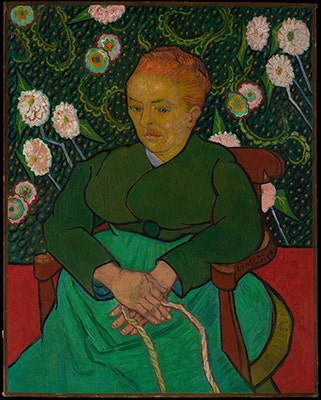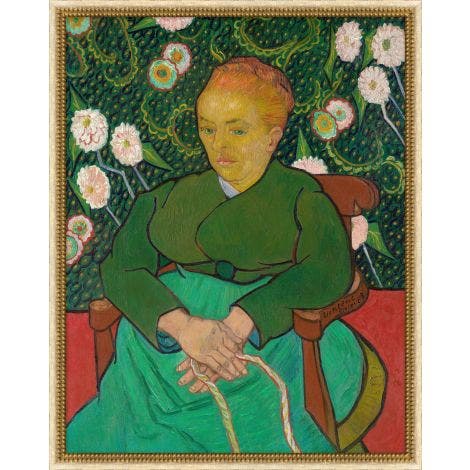Local Storage seems to be disabled in your browser.
For the best experience on our site, be sure to turn on Local Storage in your browser.
Woman Rocking a Cradle

Our Inspiration:La Berceuse (Woman Rocking
a Cradle; Augustine-Alix Pellicot Roulin)
Vincent van Gogh (Dutch, 1853–1890)
Oil on canvas, 36 1/2 x 29 in., 1889
The Walter H. and Leonore Annenberg Collection,
Gift of Walter H. and Leonore Annenberg, 1996,
Bequest of Walter H. Annenberg, 2002 1996.435
Of the five versions of Van Gogh’s portrait of Augustine Roulin, wife of his friend the postmaster of Arles, the present canvas is the one the sitter chose for herself. Van Gogh remarked that “she had a good eye and took the best.” He began the portraits just before his breakdown in Arles, in December 1888, and completed them in early 1889, calling them La Berceuse, meaning “lullaby, or woman who rocks the cradle,” indicated by the rope held in the sitter’s hand, which is attached to the unseen cradle.

Our Inspiration:La Berceuse (Woman Rocking
a Cradle; Augustine-Alix Pellicot Roulin)
Vincent van Gogh (Dutch, 1853–1890)
Oil on canvas, 36 1/2 x 29 in., 1889
The Walter H. and Leonore Annenberg Collection,
Gift of Walter H. and Leonore Annenberg, 1996,
Bequest of Walter H. Annenberg, 2002 1996.435
Of the five versions of Van Gogh’s portrait of Augustine Roulin, wife of his friend the postmaster of Arles, the present canvas is the one the sitter chose for herself. Van Gogh remarked that “she had a good eye and took the best.” He began the portraits just before his breakdown in Arles, in December 1888, and completed them in early 1889, calling them La Berceuse, meaning “lullaby, or woman who rocks the cradle,” indicated by the rope held in the sitter’s hand, which is attached to the unseen cradle.



